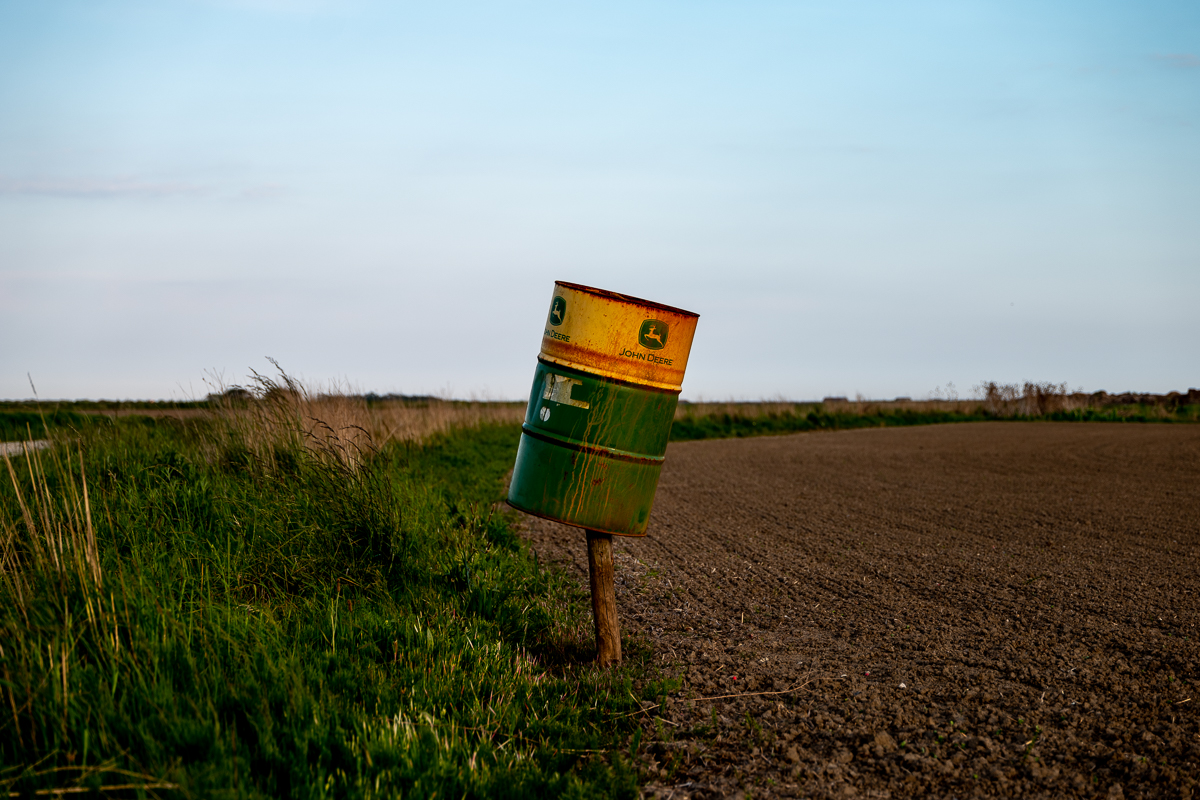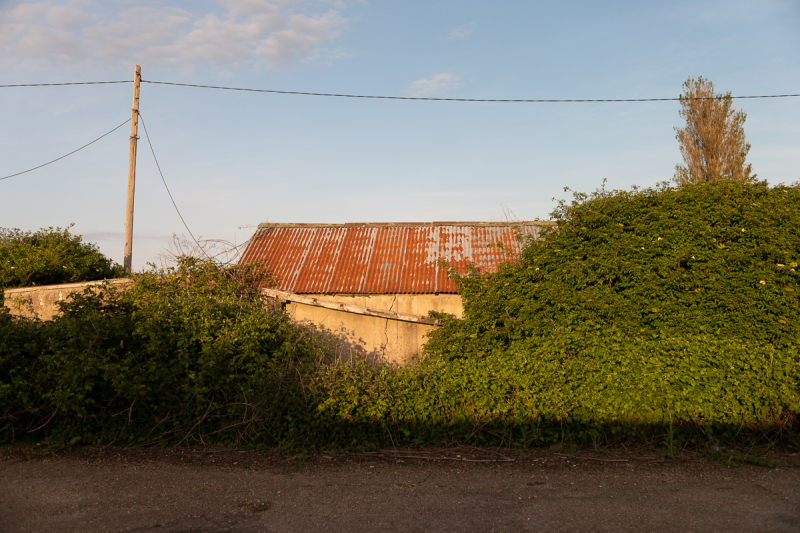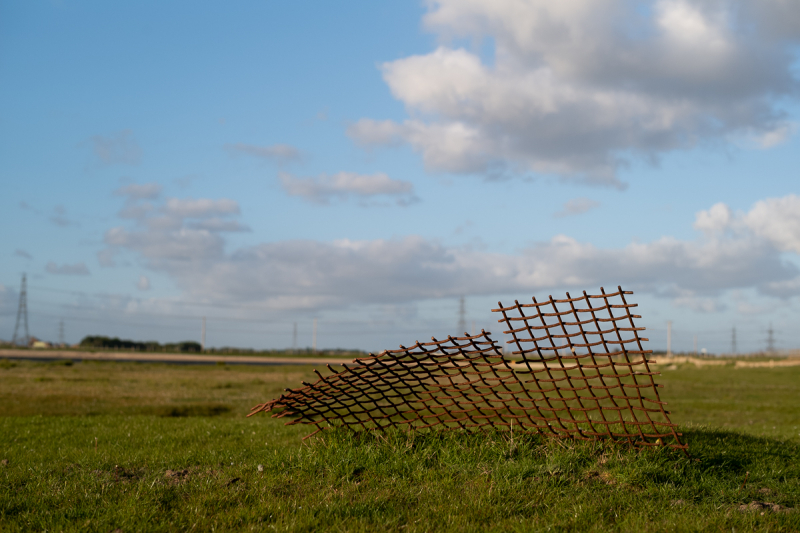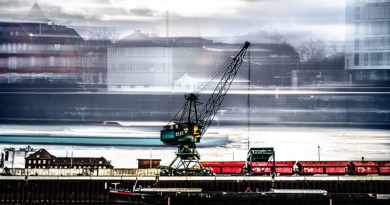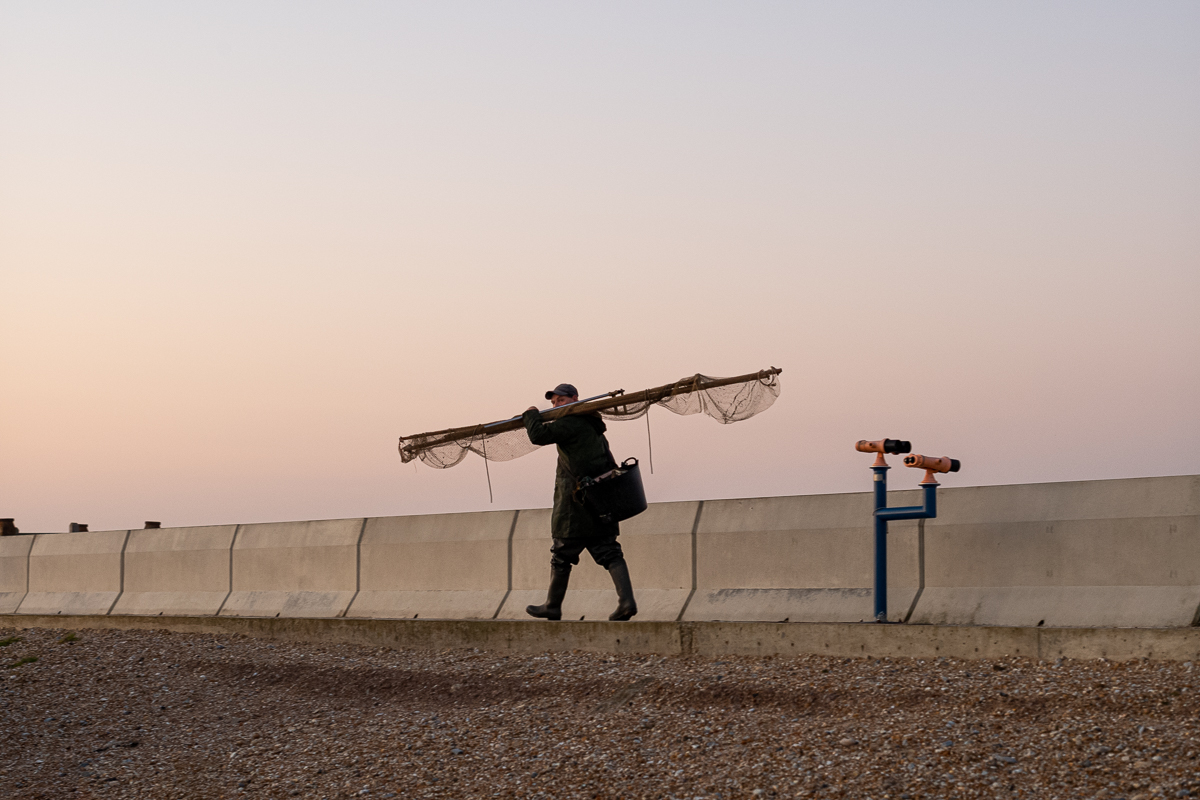
I spent the lockdown weeks slowly developing fieldworks, a personal project, exploring isolation and the art of being solitary. Our house is exposed and solitary, the nearest neighbours are half a mile away – we understand isolation here. And then the road went quiet, the cyclists stopped passing by and an eeriness settled upon us. And so I went out and tried to find out where we live.
A grubby boy looks up at his Dad. ‘That’s it, wind it on, line up those overlapping squares,’ says the man, his giant leathery hands demonstrating the actions. ‘That’s focussing, so your pictures don’t come out blurry. Now, press the button, GENTLY,’ he encourages. ‘And always have the strap round your neck so you can’t drop the camera,’ The Minolta. ‘A year’s wages for some people,’ says the Dad with a wink. (Make sure the strap is round your neck.)
The projector whirrs to our smiles or concentration. There’s Mum on skates. Or my brothers, lit by Hitchcock one sunny, stormy-skied day. There’s Jackie, my teenager sister, thin as celery with white legs of string. And of course, there’s me, the baby, suckling at a milky bottle in my gigantic perambulator as Ian carefully chews a dandelion stem.
Time is stopped. We all live forever. Smile.
As a tall, thin teenager, I was never a good fit with those around me. ‘Too clever for the council estate, too council estate for it to matter,’ said my headmaster discouragingly. I took a camera as companion, I liked the way it stopped time, how it found oblongs of order in the chaos of living. Together we made notes to debate and relate as we fell in love or watched children be born while houses and places came and went. ‘Photography is a tenacious mistress,’ Terence Pepper (of The National Portrait Gallery) told me some years ago.
When Merchant & Mills started in 2010, the camera still hung around my neck like a talisman, like a passport. I could be anywhere, looking and editing what life showed me. We put photography to work to get ourselves noticed.
Just before the Coronavirus hit the headlines, I overheard myself saying, ‘I don’t really photograph for myself these days. . . .
I suddenly bought a Leica M, a rangefinder camera that sticks tightly to its own, manual heritage whislst packing in really useful modern, digital features in a similar ethos to Merchant & Mills. In that moment, I was enticed and enchanted by the Leica legacy of mindful, spontaneous, intrinsically human photography – much of the memorable 20th Century reportage was taken with these simple, functional, hand built cameras. It arrived quickly and I cradled its dense, machined weight in my grown-up hands, bringing it to my eye and watching those familiar rectangles collide and divide through the bright-lined viewfinder. Legendary pictures made by a litany of talented loners added to the gravitas of the instrument.
When the lockdown came, I cackled inside. I was born to isolate! The offspring, and the company, suddenly stopped making any demands on me. At first the days and nights lost their shape. I watched the sunrise from the wrong end of the day. I stopped shaving, slept in my clothes, feral and lawless with no-one to tell me what to do as nobody knew, not the elders nor the government. I felt ten again.
STAY AT HOME, we were told. A new routine emerged. ‘Mrs Mills’ would go to work each day, keeping the business running by herself. I was left with Flower, a 4-year-old Patterdale Terrier. We eyed one another warily.
‘Let’s go for a walk,’ I said. She wagged her stump of a tail, I put the camera strap around my neck, and we began.
Every day of the lockdown we go out. The house is surrounded by empty marshland and quarry laid still. We find decaying buildings, rusting pylons, tiny flowers, moonscapes of scraped earth where the diggers have been. Looking makes things interesting. To look, to explore requires an open mind. After a week, I graduate to a bicycle, the new Leica tucked in my half zipped top to save it from banging at the handlebars. We stop a lot, Flower sniffs and watches, gaining a sixth sense and making her way into every shot. She learns the meaning of ‘get out the bloody picture!’ We share water when I stop for a cigarette, me swigging from the bottle as she laps from the bowl stowed in my saddlebag. She knows that despite the shout, I love her. Sometimes she sees things I might have missed and waits patiently for me to spot the puddle of light or the buried plough like a shipwreck in the grass. We get fitter as she learns to race me, flying along the empty paths and farmyard concrete tracks. A new concentric circle of adventure grows as we venture further, over fences, down and up the ditches. The perimeter of our endeavours is set by boundaries we cannot cross without a lead. This becomes our patch, outlined in red on an invisible map that keeps us safe from encountering people but free each day to have our eyes surprised and filled.
Photography evolves into a practice, a place to encounter the outside, to notice, listening to the birdsong. And always there is the wind hurtling across the marshes.
We see the same subjects often, though the light is ever changing. How is this day different? What does my eye fall upon today? The future has become nearer, this day, this hour, this 1/2000 sec. Here I am then, solitary and in isolation. Accompanied by a camera, a bicycle and a dog. This land is home.
has become a small Instagram showcase on the theme of loneliness, solitude and isolation – the nuances of being alone, set on the windswept marshes at the East Sussex and Kent border. It is perpetually curated by my eldest daughter, Maud. The collaboration brings discipline and purpose to the practice – a demand to supply and an attentive audience of one who decides what to share and how. Thank you, Maud.
Flower (@flower_the_marsh_dog)
has her own Instagram account.
In the following gallery you will find all pictures of the series. If you click on a picture, the gallery opens and you can view all pictures in full size at your leisure.

* of French origin, ‘amateur’ originally denoted a lover of art, one who creates for love, not money
Journalism and running an online magazine costs money. Our online magazine is free of advertisements. We do everything out of love and dedication. We are not profit oriented. Support Tagree that the magazine remains ad-free and the monthly costs can be paid. TAGREE, I love your cultural work, I donate to show you my appreciation, voluntary, one-time or regular monthly or per quarter:


